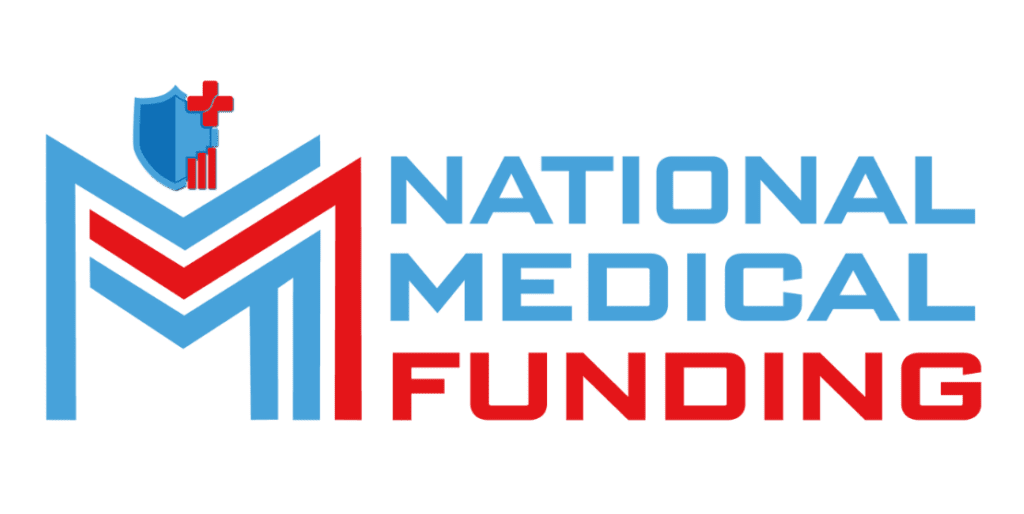
Funding the Shift: How Healthcare Loans Suppo
The Rise of Direct Pay and Membership-Based Models ...

Saturday and Sunday – CLOSED
support@nationalmedicalfunding.com



Every medical practice, no matter the size, eventually faces the same tough question: how do you compensate your physicians fairly while keeping your business financially sound? For many, this balance is tricky. Rising operational costs, reduced reimbursements, and growing patient demands put immense pressure on compensation models.
This is where healthcare loans become more than just a lifeline—they become a strategy. By securing the right financial support, practices can restructure or design compensation systems that prioritize sustainability and reward performance, without risking burnout or instability.
Compensation must not only be competitive—it must also be structured in a way that aligns incentives, attracts talent, and reflects the realities of modern practice. A sustainable compensation plan accounts for profitability, physician wellness, and operational scalability. This broader view encourages physicians to stay committed and helps maintain care quality.
The old-school models—salary-based or productivity-based—might have worked decades ago, but they don’t always align with today’s challenges. A flat salary may not motivate, while RVU- or collections-based pay can lead to inequities or internal competition. Add in the complexities of different specialties and practice sizes, and one thing becomes clear: compensation models need to evolve.
Healthcare providers are increasingly exploring hybrid models and incentive structures. Yet, transitioning to these systems often requires upfront capital—for consultations, legal revisions, staff training, or temporary income buffers. This is where healthcare funding solutions come in to enable smart transformation.
Here’s a comparison of common models:
Compensation Model | Pros | Cons |
Salary-Based | Stability, predictable budgeting | Can discourage high performance |
Productivity-Based | Rewards high-volume physicians | Can promote burnout or quantity over quality |
Hybrid (Salary + Bonus) | Balance of security and incentives | Complex to administer |
Outcome-Based | Encourages quality care | Requires robust tracking tools |
Each model has merits, but without financial support, transitioning from one to another can strain resources and morale.
Change is expensive, especially in healthcare. Whether you’re moving toward a new pay structure, implementing technology to track performance, or bringing in external advisors, the transition requires funds. But waiting until profits rise isn’t always an option.
Healthcare loans allow you to act now—before compensation issues turn into retention crises. Whether it’s a short-term bridge or a long-term strategic loan, these solutions give you the flexibility to invest in change. Our article, Closing the Gap: How Short-Term Healthcare Loans Solve Practice Cash Flow Crises, explores how these loans keep operations afloat while laying the foundation for future stability.
With the right loan product, practices can:
Without capital constraints, leadership can focus on strategic outcomes, not just short-term cost control.

Linking compensation to outcomes and performance is increasingly popular. However, implementing these models isn’t as simple as flipping a switch. You’ll likely need new tools, training programs, or third-party consultants to ensure fairness and accuracy.
In Funding the Shift: How Healthcare Loans Support Direct Pay & Membership-Based Practices, we explained how shifting models is easier with financing in place. The same logic applies here. Performance-based pay can lead to better patient outcomes and happier staff—but only when funded with thoughtful financial planning.
Required Investments | Estimated Cost Range |
Compensation software tools | $3,000 – $15,000 |
Legal & compliance consultation | $5,000 – $20,000 |
Staff training & workshops | $2,000 – $10,000 |
Transition bonus pool | $10,000 – $100,000+ |
National health finance tools can help fund these critical pieces, creating smoother transitions and stronger long-term results.
When doctors feel undervalued, they leave. When pay is unclear or inconsistent, stress levels rise and morale drops. Retention becomes a struggle—and recruitment becomes a costly, recurring burden.
Tailored healthcare funding solutions can be used to offer retention bonuses, support new physician onboarding, or even fund benefits programs. These aren’t expenses—they’re investments. When physicians feel financially secure and appreciated, they’re more likely to stay and thrive.
You might allocate loan funds toward:
Strategic use of funding makes retention a reality—not just a buzzword.
As practices grow, so should compensation structures. Adding physicians, expanding services, or even acquiring new locations calls for robust financial planning. You can’t expand without adjusting how you reward your team.
Using national health finance tools allows you to scale without disrupting cash flow. For instance, financing can help you bring on new hires with competitive compensation packages while waiting for the revenue curve to catch up. Smarter Budgeting, Better Care: How Tailored Healthcare Financing Transforms Specialty Practices dives into how smart funding powers strategic, scalable growth.
Sample Expansion Plan Funded by Loans:
Investment Area | Use Case | Estimated Cost |
New provider compensation | Offer salaries and benefits during ramp-up | $200,000+ annually |
Facility upgrade | Modernize work environment for team retention | $50,000 – $300,000 |
EHR & scheduling upgrades | Improve physician efficiency | $20,000 – $100,000 |
Expansion is easier when compensation doesn’t lag behind progress.

Let’s talk specifics. A group of ENTs in the Midwest recently used a long-term healthcare loan to overhaul their outdated compensation model. They hired a healthcare economist, implemented a balanced scorecard system, and offered performance bonuses. Within 12 months, physician satisfaction skyrocketed—and turnover plummeted.
This is the power of proactive financing. By securing funds up front, these physicians avoided haphazard pay decisions and instead created a thoughtful, data-backed model. National funding reviews confirm what stories like these suggest: that the right loan at the right time can change everything.
Here’s a simplified version of their roadmap:
Action Step | Timeline | Loan-Funded? |
Compensation audit | Month 1 | Yes |
Hire external consultants | Month 2-3 | Yes |
Implement bonus structures | Month 4 | Yes |
Measure outcomes | Month 6–12 | No |
Planning and pacing your compensation overhaul with loans makes it more sustainable—and far less stressful.
Thinking about exiting your practice? You’ll want it to be in tip-top financial shape. That means having a stable, transparent, and fair compensation model. Buyers love systems that are easy to understand and predict.
In Boosting Medical Practice Valuation: How Smart Financing Raises Sale Value Before Exit, we explored how investing in systems—including pay models—can elevate your sale price. With the help of healthcare loans, you can make those investments well before you hit the market.
Financial transparency gives buyers confidence. It also helps practices command higher prices and reduce negotiation friction. If you’re planning to sell in 2–5 years, the time to invest in your compensation framework is now.
Choosing a financing partner is a big decision. National funding reviews can give you honest insights into how lenders perform under pressure. Are they flexible? Transparent? Do they understand the healthcare space?
Look for a partner like National Medical Funding, one that offers not just loans, but smart support. From helping you understand your repayment plan to offering solutions tailored to your specialty, the right partner makes all the difference.
What to Evaluate in Reviews | Why It Matters |
Loan speed | Quick access supports urgent needs |
Industry expertise | Healthcare knowledge reduces missteps |
Customer service | Clear communication supports success |
Flexibility in terms | Helps weather fluctuations in revenue |
Good lenders do more than hand out checks—they guide your strategy.
Ready to get started? Begin by auditing your current compensation plan. Where are the gaps? What do physicians want? Then, explore which healthcare loans or national health finance tools can fund your goals.
Whether it’s upgrading your tech, paying for performance consultants, or rolling out retention bonuses, financing can support your entire journey. And with a clear roadmap, you’re not just improving pay—you’re building a future-proof practice.
Physician compensation doesn’t have to be a financial headache. With the right framework—and the right funding—you can create pay models that reward performance, retain top talent, and drive long-term success.
From exploring healthcare funding solutions to reading national funding reviews, every step you take toward smarter compensation is a step toward better care. And that’s what it’s all about.
The Rise of Direct Pay and Membership-Based Models ...
Time is Money in Medicine In the high-stakes worl...

Fuel your medical practice’s growth with financial solutions tailored to your needs. We’re here to support independent practitioners and group practices with strategies built for success.
Mon Fri: 8:00am – 6:00pm
Saturday: Closed
Sunday: Closed
Copyright © 2025 National Medical Funding